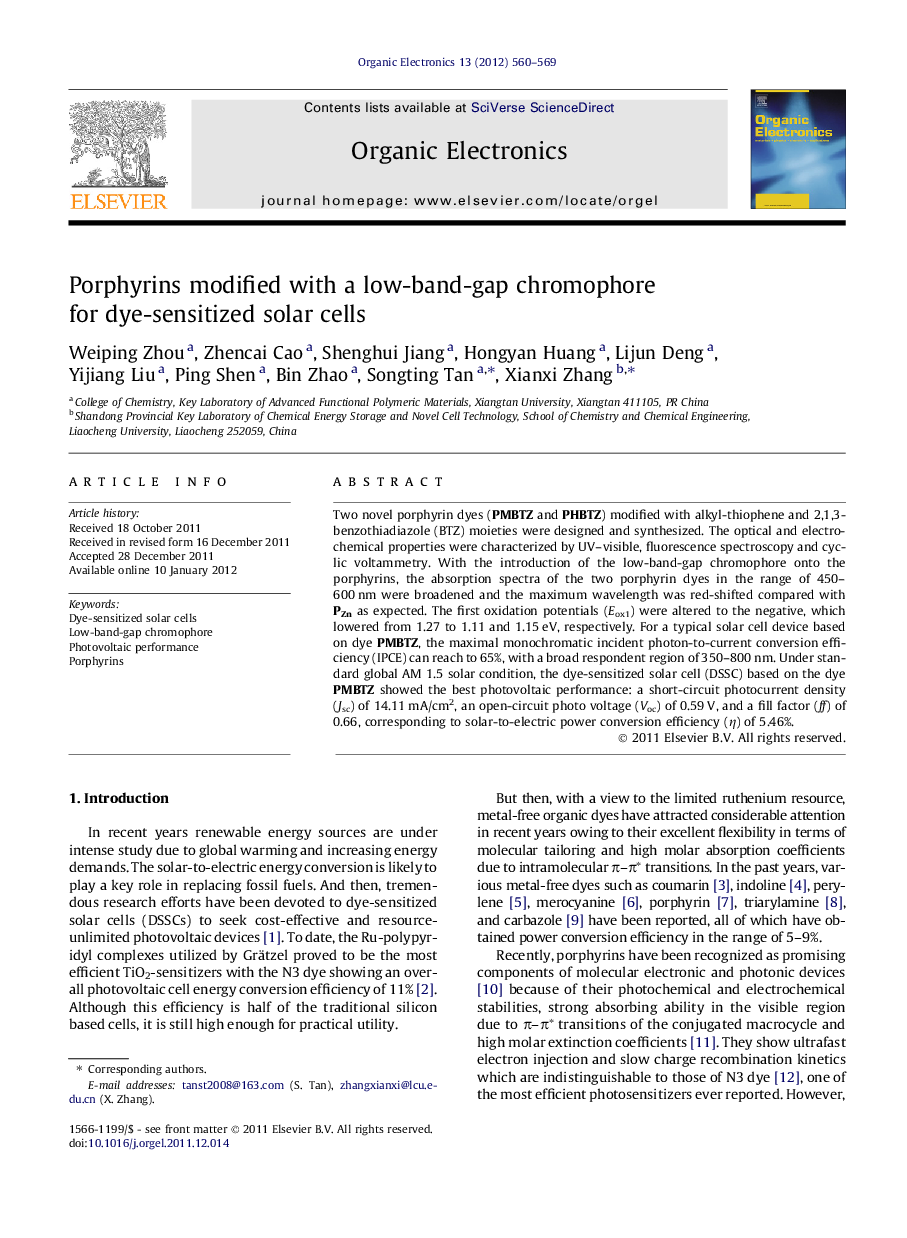| کد مقاله | کد نشریه | سال انتشار | مقاله انگلیسی | نسخه تمام متن |
|---|---|---|---|---|
| 1264590 | 972159 | 2012 | 10 صفحه PDF | دانلود رایگان |

Two novel porphyrin dyes (PMBTZ and PHBTZ) modified with alkyl-thiophene and 2,1,3-benzothiadiazole (BTZ) moieties were designed and synthesized. The optical and electrochemical properties were characterized by UV–visible, fluorescence spectroscopy and cyclic voltammetry. With the introduction of the low-band-gap chromophore onto the porphyrins, the absorption spectra of the two porphyrin dyes in the range of 450–600 nm were broadened and the maximum wavelength was red-shifted compared with PZn as expected. The first oxidation potentials (Eox1) were altered to the negative, which lowered from 1.27 to 1.11 and 1.15 eV, respectively. For a typical solar cell device based on dye PMBTZ, the maximal monochromatic incident photon-to-current conversion efficiency (IPCE) can reach to 65%, with a broad respondent region of 350–800 nm. Under standard global AM 1.5 solar condition, the dye-sensitized solar cell (DSSC) based on the dye PMBTZ showed the best photovoltaic performance: a short-circuit photocurrent density (Jsc) of 14.11 mA/cm2, an open-circuit photo voltage (Voc) of 0.59 V, and a fill factor (ff) of 0.66, corresponding to solar-to-electric power conversion efficiency (η) of 5.46%.
Two novel porphyrin dyes linked the low-band-gap chromophore were designed and synthesized. The optical, electrochemical properties and photovoltaic performances were investigated in detail.Figure optionsDownload as PowerPoint slideHighlights
► Two novel porphyrin dyes were designed and synthesized.
► The absorption spectra were broadened and the red-shifted due to introduce the low-band-gap chromophore.
► The dye-sensitized solar cell based on the dye PMBTZ obtained a solar-to-electric power conversion efficiency of 5.46%.
Journal: Organic Electronics - Volume 13, Issue 4, April 2012, Pages 560–569